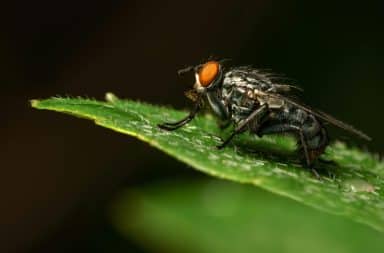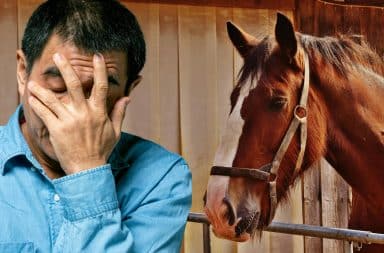Last week I rewatched the post-apocalyptic horror film A Quiet Place, starring real-life couple but also fictional life couple, John Krasinski and Emily Blunt. The film is about a family living in a desolate post-apocalyptic world, (or possibly contemporary upstate New York) who are forced to live in silence to hide from monsters with ultra-sensitive hearing.
I could see why most viewers would think that these monsters are the reason why the family adopts a life of extreme quietude, depriving themselves of life’s many pleasures including laughter, clapping, and listening to Ariana Grande’s soulful new album Sweetener. But last night after watching a video article on my National Geographic Snapchat feed, I became enlightened and realized that maybe the family’s decision to live in silence was dictated by a threat far worse than these monsters; the harmful long-term impacts of noise pollution on the environment.
Isn’t it possible that what caused the Abbott family to refrain from speaking aloud wasn’t necessarily the looming monsters in the surrounding forests but a social responsibility to mitigate the environmental and health-related impacts of noise pollution, evidenced by a plethora of studies? Studies that, to cite just a few, link noise pollution with hearing loss, sleep disorders, octopus immobility, and frog vocal sac discoloration, among other things that sound like I made up but are definitely real, serious things I didn’t make up.
Perhaps the Abbott family is just an environmentally conscious bunch and wanted to make a responsible lifestyle change? How is communicating exclusively in sign language, walking only on sand trails barefoot, or keeping your crying children in soundproof containments, really that different from recycling your plastics? It’s all for the environment.
In the film, Emily Blunt’s character accidentally steps on a nail and holds in her screams. In this scene, I don’t believe she’s afraid of the creatures. I think she is just aware of the 2016 study that revealed that dwarf mongooses may be distracted and slower to smell and detect a predator’s feces when exposed to man-made noises. It’s possible that she swallowed her shrieks because just she didn’t want to contribute to the clamor currently devasting our beloved mongoose population. Rightly so.
What’s scarier than a world where mongeese can’t smell poop properly? I honestly don’t know.
Later in the film, Blunt’s pregnant character prematurely enters labor and must stifle her cries during such a painful and stressful experience. I think what was likely going through her head as she lay in silence in that bathtub, was a 2014 study which found that after groundhogs were exposed to simulated traffic noise, their social interactions declined by 50%. Isn’t it possible then, that she was actually silently enduring the excruciating pain of a medically under supervised childbirth because she didn’t want her screams to worsen groundhog social anxiety? Let’s not rule it out.
And truthfully, those monsters aren’t even that frightening when you really think about it, so I doubt that’s what drove the family to muteness. These creatures pick up on any words you utter, and then immediately and relentlessly attack you, without a shred of mercy. That to me just sounds like any marriage after the twenty-year mark—it’s nothing to get freaked out over. The real danger is the environmental harm of noise which is causing oysters to clam up somehow, despite them not even having ears. Not some spidery Demogorgons that act like your aunt and uncle at Thanksgiving.
Furthermore, there is arguably a bigger killer at play here than the monsters; noise-associated cardiovascular disease. How can we definitively say that the couple’s actions weren’t motivated by a 2018 study from the Journal of the American College of Cardiology which found that environmental noise is associated with an increased incidence of arterial hypertension, heart failure, and stroke? The truth is we can’t.
Yes, while the film implies that the monsters decimated a lot of the Earth’s population, the World Health Organization estimates that 31% of deaths globally are due to heart disease. It’s safe to say then that environmental noise pollution is contributing to this mortality statistic, and therefore real antagonist of the film.
To summarize, The Quiet Place is essentially An Inconvenient Truth but for noise pollution. Instead of Al Gore clicking through a PowerPoint to convey his message about climate change, it’s John Krasinki holding in his toots in the name of acoustic litter.
Again, this is all speculation. We don’t know for sure. But I’m probably right. I guess we’ll have to wait for the director’s commentary to come out.


